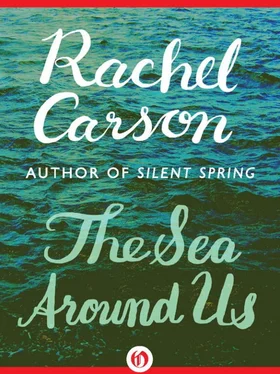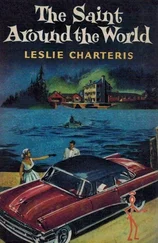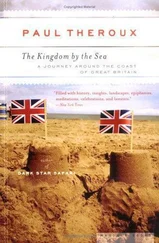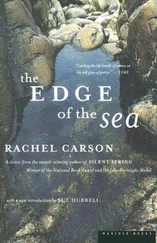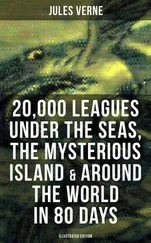The shipbuilding and seamanship of the Norwegians mark a new epoch in the history both of navigation and discovery, and with their voyages the knowledge of northern lands and waters was at once completely changed… We find accounts of these voyages of discovery in the old writings and sagas, a large part of which was put into writing in Iceland. A somber undercurrent runs through these narratives of voyages in unknown seas—the silent struggle of hardy men with ice, storms, cold, and want.
They had neither compass, nor astronomical instruments, nor any of the appliances of our time for finding their position at sea; they could only sail by the sun, moon, and stars, and it seems incomprehensible how for days and weeks, when these were invisible, they were able to find their course through fog and bad weather; but they found it, and in the open craft of the Norwegian Vikings, with their square sails, fared north and west over the whole ocean, from Novaya Zemlya and Spitsbergen to Greenland, Baffin Bay, Newfoundland, and North America…. It was not until five hundred years later that the ships of other nations were to make their way to the same regions. [29]
But only the vaguest rumors of any of these things had reached the ‘civilized world’ of the Mediterranean. While the sagas of the Norsemen were giving clear and factual directions for the passage across oceans, from known to unknown worlds, the writings of the scholars of the medieval world dealt still with that outermost encircling ocean, the dread Sea of Darkness. About the year 1154 the noted Arab geographer Edrisi wrote for the Norman king of Sicily, Roger II, a description of the earth, accompanied by 70 maps, which portrayed on the outside of all the known earth the Dark Sea, forming the limit of the world. He wrote of the sea about the British Isles that it is ‘impossible to penetrate very far into this ocean.’ He hinted at the existence of far islands but thought the approach to them difficult because of the ‘fog and deep darkness that prevails on this sea.’ The scholarly Adam of Bremen, writing in the eleventh century, knew of the existence of Greenland and Wineland as distant islands in the great ocean, but could not separate the reality from the old ideas of that sea, ‘infinite and fearful to behold, which encompasses the whole world,’ that ocean flowing ‘endlessly around the circle of the earth.’ And even the Norsemen themselves, as they discovered lands across the Atlantic, seem merely to have pushed back the boundaries of the place where still there began that outermost ocean, for the idea of the outer ocean surrounding the disc of the earth appears in such Northern chronicles as the Kings Mirror and the Heimskringla. And so over that Western Ocean into which Columbus and his men set out there hung still the legend of a dead and stagnant sea, of monsters and entrapping weeds, of fog and gloom and ever present danger.
Yet centuries before Columbus—no one knows how many centuries—men on the opposite side of the world had laid aside whatever fears the ocean may have inspired and were boldly sailing their craft across the Pacific. We know little of the hardships, the difficulties, and the fears that may have beset the Polynesian colonists—we know only that somehow they came from the mainland to those islands, remote from any shore. Perhaps the aspect of these central Pacific waters was kindlier than that of the North Atlantic—it must have been—for in their open canoes they entrusted themselves to the stars and the signposts of the sea and found their way from island to island.
We do not know when the first Polynesian voyages took place. Concerning the later ones, there is some evidence that the last important colonizing voyage to the Hawaiian Islands was made in the thirteenth century, and that about the middle of the fourteenth century a fleet from Tahiti permanently colonized New Zealand. But again, all those things were unknown in Europe, and long after the Polynesians had mastered the art of navigating unknown seas, the European sailors still regard the Pillars of Hercules as the gateway to a dreaded sea of darkness.
Once Columbus had shown the way to the West Indies and the Americas, once Balboa had seen the Pacific and Magellan had sailed around the globe, there arose, and long persisted, two new ideas. One concerned the existence of a northern passage by sea to Asia; the other had to do with a great southern continent generally believed to lie below the then-known lands.
Magellan, while sailing through the strait that now bears his name, had seen land to the south of him through all the thirty-seven days required for the passage through the strait. At night the lights of many fires glowed from the shores of this land, which Magellan named Tierra del Fuego—Land of Fires. He supposed that these were the near shores of that great land which the theoretical geographers had already decided should lie to the south.
Many voyagers after Magellan reported land they assumed to be outlying regions of the sought-for continent, but all proved to be islands. The locations of some, like Bouvet, were so indefinitely described that they were found and lost again many times before being definitely fixed on maps. Kerguelen believed firmly that the bleak, forbidding land he discovered in 1772 was the Southern Continent and so reported it to the French government. When, on a later voyage, he learned that he had found merely another island, Kerguelen unhappily named it ‘Isle of Desolation.’ Later geographers, however, gave his own name to it.
Discovery of the southern land was one of the objects of Captain Cook’s voyages, but instead of a continent, he discovered an ocean. By making an almost complete circumnavigation of the globe in high southern latitudes, Cook revealed the existence of a stormy ocean running completely around the earth south of Africa, Australia, and South America. Perhaps he believed that the islands of the South Sandwich group were part of the Antarctic mainland, but it is by no means sure that he was the first to see these or other islands of the Antarctic Ocean. American sealers had quite possibly been there before him, yet this chapter of Antarctic exploration contains many blank pages. The Yankee sealers did not want their competitors to find the rich sealing grounds, and they kept the details of their voyages secret. Evidently they had operated in the vicinity of the outer Antarctic islands for many years before the beginning of the nineteenth century, because most of the fur seals in these waters had been exterminated by 1820. It was in this year that the Antarctic continent was first sighted, by Captain N. B. Palmer in command of the Hero, one of a fleet of eight sealers from Connecticut ports. A century later, explorers were still making fresh discoveries about the nature of that Southern Continent, dreamed of by the old geographers, so long searched for, then branded a myth, and finally established as one of the great continental masses of the earth.
At the opposite pole, meanwhile, the dream of a northern passage to the riches of Asia lured one expedition after another into the frozen seas of the north. Cabot, Frobisher, and Davis sought the passage to the northwest, failed, and turned back. Hudson was left by a mutinous crew to die in an open boat. Sir John Franklin set out with the Erebus and Terror in 1845, apparently entered the labyrinth of Arctic islands by what later proved a feasible route, but then lost his ships and perished with all his men. Later rescue ships coming from east and west met in Melville Sound and thus the Northwest Passage was established.
Meanwhile there had been repeated efforts to find a way to India by sailing eastward through the Arctic Sea. The Norwegians seem to have hunted walruses in the White Sea and had probably reached the coasts of Novaya Zemlya by the time of Ottar; they may have discovered Spitsbergen in 1194, although this is usually credited to Barents in 1596. The Russians had hunted seals in the polar seas as early as the sixteenth century, and whalers began to operate out of Spitsbergen soon after Hudson, in 1607, called attention to the great number of whales in the sea between Spitsbergen and Greenland. So at least the threshold of the ice-filled northern ocean was known when the British and Dutch traders began their desperate attempt to find a sea road north of Europe and Asia. There were many attempts, but few got beyond the coasts of Novaya Zemlya; the sixteenth and seventeenth centuries were marked by the wreckage of hopes as well as of vessels, and by the death of such brilliant navigators as William Barents under the hardships met by expeditions ill prepared for arctic winters. Finally the effort was abandoned. It was not until 1879, after the practical need for such a passage had largely disappeared, that Baron Nordenskiöld, in the Swedish Vega, passed from Gothenburg to Bering Strait.
Читать дальше
